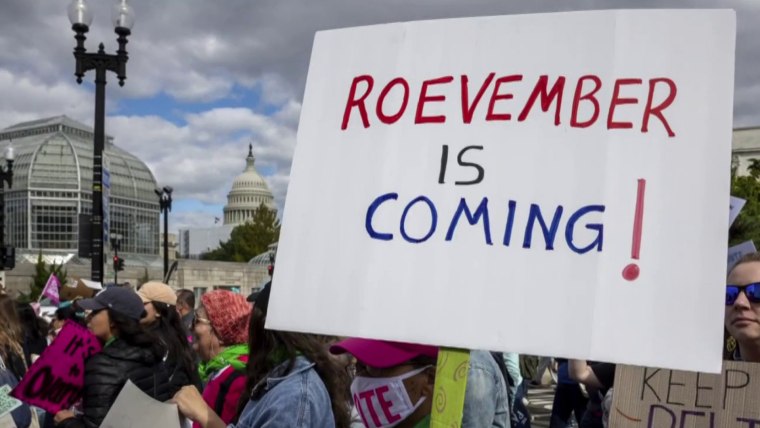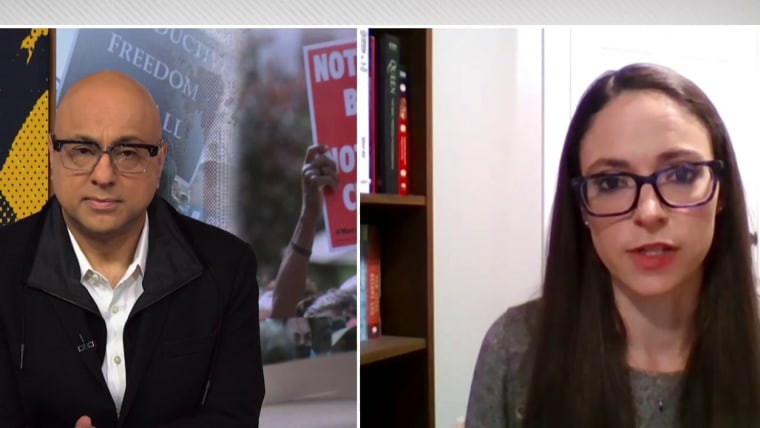A study released this week confirmed a surprising fact: The national abortion rate has risen slightly in the year since the Supreme Court overturned Roe v. Wade. The study, released by WeCount, a project of the Society of Family Planning, relied on data from more than 80% of the nation’s providers, along with historical trends and state data. The report matches earlier findings released last month by the Guttmacher Institute, which likewise found abortions had remained steady or even increased since Dobbs v. Jackson Women's Health.
With abortion rates not decreasing, opponents will pursue increasingly complex and constitutionally dubious ways to shut down access in and travel to progressive states. The outcome of this ratcheting up of penalties will be just as predictable. While criminalization makes pregnancy far more dangerous, it is ineffective because it fails to address the reasons one would consider abortion in the first place.
The largest increases in abortions took place in states that still guarantee access to the procedure and border jurisdictions where it’s banned.
That two separate studies have found similar trends is all the more remarkable because it has always been difficult to get a full picture of abortion in the United States. For decades, as anti-abortion advocates battled to overturn Roe, data was weaponized. Conservative states passed laws requiring clinics to record information about any post-abortion complications, the timing of the procedure, and the reason a patient chose to terminate a pregnancy. This information, in turn, was sometimes used to make the case against legal abortion.
The threat that data would be politicized at the federal level led to California’s decision not to share abortion data with the Centers for Disease Control and Prevention. And patients’ fear of stigma or exposure meant that research from Guttmacher, the CDC and WeCount relies on providers rather than patients in gathering data. Provider data misses a significant number of self-managed abortions: Researchers estimate that since Dobbs there were 5,000 more monthly requests for abortion pills from the largest international provider alone. Studies that rely on women and other pregnant people to self-report abortion experiences, by contrast, have always been notorious for underreporting.
And that was before Dobbs. Now, abortion is a crime across large swaths of the country, increasing abortion seekers’ already intense desire for self-protection and secrecy. It is a stunning indictment of the inefficacy and unintended consequences of criminal bans that we now know abortions are becoming more common in the post-Dobbs era despite these hurdles.

The largest increases in abortions took place in states that still guarantee access to the procedure and that border jurisdictions where it’s banned. Anti-abortion leaders, in turn, have looked for ways to limit abortion-related travel — or apply their criminal laws extraterritorially — even before Dobbs. This campaign has recently escalated, with Lubbock County in Texas becoming the latest to prohibit anyone from using county roads or airports to transport anyone for abortion.
These strategies have had obvious downsides. To begin with, they do not seem very popular. A Morning Consult survey found even Republicans opposed limits on the right to travel.
Abortion opponents have also explored the possibility of a federal ban.
Efforts to restrict travel or apply laws extraterritorially might not be constitutional either. The right to travel has been well recognized by courts for centuries, and ignoring another state’s abortion laws could raise questions under the Constitution's full faith and credit clause. Supreme Court Justice Brett Kavanaugh, who holds a key vote in abortion cases, suggested that some limits on abortion-related travel might be unconstitutional. And courts would need to sort out which state’s laws even applied in the first place.
All of this initially made Republican leaders gun-shy about pursuing travel bans too aggressively, at least in the short term. The GOP’s struggles on abortion in the 2022 midterms did not make Republicans any more eager.
But data like that in WeCount’s study will only increase the pressure on the Republican Party from the right to embrace more unpopular and constitutionally questionable enforcement strategies. Abortion opponents have also explored the possibility of a federal ban. A new national abortion restriction is almost certainly not going to emerge from this Congress. But abortion foes maintain that the Comstock Act, a 19th-century anti-vice law, can be interpreted as a de facto ban on abortion. Project 2025, a presidential transition plan developed by the Heritage Foundation and distributed to every Republican presidential candidate, makes enforcement of Comstock against providers and drug manufacturers the centerpiece of its abortion strategy.

At least publicly, Republicans have remained mum about the Comstock Act, and with good reason. It could be interpreted to apply to women as well as doctors — indeed to anyone who receives any item designed, intended or adapted for abortion in the mail, even in when there is a threat to life or a sexual assault. That is not a case that many Republicans want to make to voters in 2024. The irony is that even the most draconian enforcement mechanism will be imperfect. Pills will still likely come into the United States from abroad. Americans will travel out of the country or devise at-home methods.
If Republicans really wanted to decrease abortion rates — a realistic step, given a recent decadeslong decline — they wouldn’t focus on more criminalization. Demand for abortion is critical too. Rates of unintended pregnancies matter tremendously. So do the experiences of women who might consider raising a child if they were unafraid of dying in pregnancy, or if their economic circumstances were more secure, or if they were better protected from racism or domestic violence. Criminalization alone can drive a practice underground or make it unsafe, but people desperate enough to terminate a pregnancy will still try to find a way.
In theory, a state interested in protecting fetal life could do so by making pregnancy less dangerous — and by making it less painful to be a woman or parent or person of color in the United States. But sadly, much of the nation is on a very different post-Dobbs trajectory: Rather than lowering abortion rates or protecting reproductive liberty and equality, many states will continue to fail at both.
